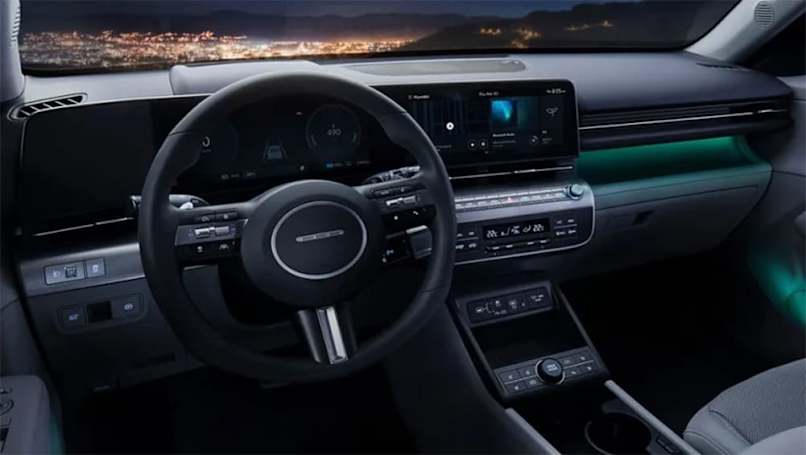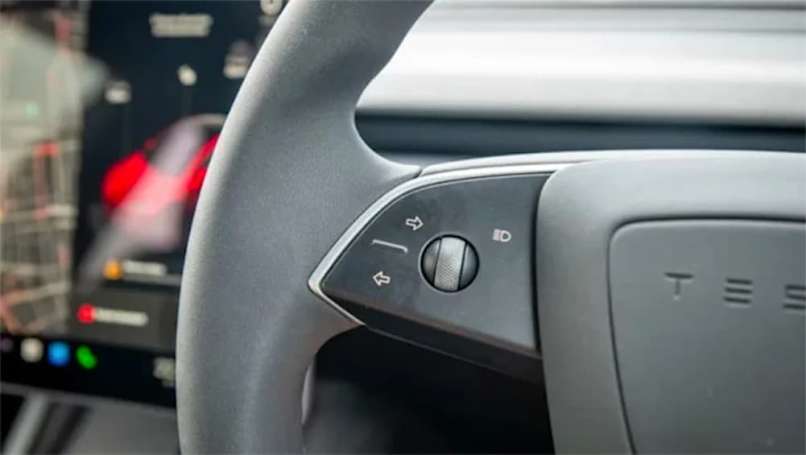
2025 BYD Shark 6 sales scrutinised as rival Kia Tasman ute and plug-in hybrid Ford Ranger PHEV and GWM Cannon Alpha launches loom
BYD Shark 6 fever has well and truly swept over the country, but is it all as...
Browse over 9,000 car reviews

This year, South Australia activated its mobile phone detection cameras. In a three-month grace period before fines kicked off, 68,000 drivers had been snapped using their phones while on the move.
Other states where these cameras already exist have resulted in tens of thousands of fines sent out for the same thing — which is disappointing. Using mobile phones behind the wheel is distracting, and we should really know better.
But what about the other (increasingly) giant distractions in new cars: multimedia touchscreens? The limitation on using a mobile phone while driving is justified, but why do automotive multimedia systems get a pass? Just because they’re part of the car?
Right now, the restrictions on phone use while driving are increasing, inverse to the increasing encouragement to interact with giant touchscreen devices attached to car dashes.
It seems counterintuitive, given the proliferation of multimedia systems, that new drivers are starting to be able to afford cars with increasingly complex menus and functions accessible via a screen.
Those learning to drive or those on provisional licences aren’t able to touch their phone (or even use via voice control function) at all in most cases while driving, but a 12.0-inch touchscreen mounted to the dash that runs everything in the car is fine?
Again, this isn’t a suggestion we should be using our phones while driving — quite the opposite — but consider how familiar you are with your phone. If you’re anything like me (admittedly a millennial working in media), you might have your phone in your hand at least once every half hour, every day, and it probably doesn’t take you a lot of brain power to navigate its menus or apps.
But can you say the same about the multimedia system in your car? Car reviewers (hello) drive plenty of different cars with different systems, and while we might not get the chance to become fluent in each and every multimedia system’s layout, we can certainly see that not all of them are as intuitive as an iPhone or Android phone.
So why is it okay for drivers, especially new drivers, to have full access to these while navigating a rural back-road at 80km/h or in peak-hour traffic with cars unexpectedly braking regularly?

Worse is that many brands are increasingly making those screens a necessity for functions like climate control and driving settings.
But not every manufacturer has fallen into this bad habit.
Some of the most popular brands in Australia — Toyota, Mazda, Kia and Hyundai — are keeping buttons alive with some even going a step further.
Get into pretty much any new Hyundai or Kia and you’ll find there are still buttons galore, particularly physical climate controls.
And while phone mirroring goes some way to simplifying multimedia operations, Toyota and Mazda apply limitations (as some other brands do) while a car is moving.
Toyota’s menu options are limited unless the vehicle is in park, encouraging drivers to pull over to do anything particularly complex. Connecting a phone, for example often requires one to pull over.
Mazda, on the other hand, completely deactivates the touchscreen unless the car is parked, requiring drivers to use the physical wheel or knob (the Commander control) in the centre console.

It means there’s no leaning over and needing to be accurate with finger taps on a screen, rather the system can be navigated quite easily. It was once also a BMW staple, but no longer.
Some brands are holding onto the convenience of buttons as others lean on screens, regulations may soon force a return to the physical controls that were once ubiquitous.
Earlier in 2024, Euro NCAP announced it will require manufacturers to have physical controls for the horn, indicators, windscreen wipers, hazard lights and a call button for SOS.
ANCAP here in Australia will follow on, with CEO Carla Hoorweg previously telling CarsGuide, the shifting of functions to touchscreens increases the risk of vehicle crashes on the road.
"We know driver distraction is a growing factor in road crashes, so it is important that certain in-vehicle controls are easily accessible by the driver and don't complicate the driving task or contribute to in-car distraction or inattention," she said.
"Physical buttons or stalks to operate these key vehicle controls will be encouraged through scoring, with manufacturers awarded points for the prioritisation of physical controls."
The increase in screen functionality has been seen as a ‘premium’ design style, it’s not an opinion shared by every top-end manufacturer.

In early 2024, Aston Martin Director of Design Miles Nurnberger told CarsGuide the need to create an actually functional interior overrides the desire to create a ‘clean’ look.
He emphasised the balance between style and function when it comes to premium products, and seems to see screen functions as somewhat of an easy ‘trap’ to fall into for designers.
“I might be able to make something seemingly more efficient by burying everything in a screen, but it doesn't talk to the real user experience,” he said, referring to the button-laden interior of the new Vantage.
“You look at the best experience, the best user solution. It might be physical, it's tactile. I can do that with my thumb. I don't take my eyes off the road. I'm a better driver for it. You know that that's the mentality that led us to where we are.”
Not everyone is aiming to be ‘a better driver’ to the extent that some behind the wheel of a Vantage might be, it certainly can’t hurt for everyone on the road to have a more intuitive and safer experience behind the wheel.
Hopefully the distractions of car touchscreens doesn’t become a great enough problem to require similar rules to mobile phone use.
Comments